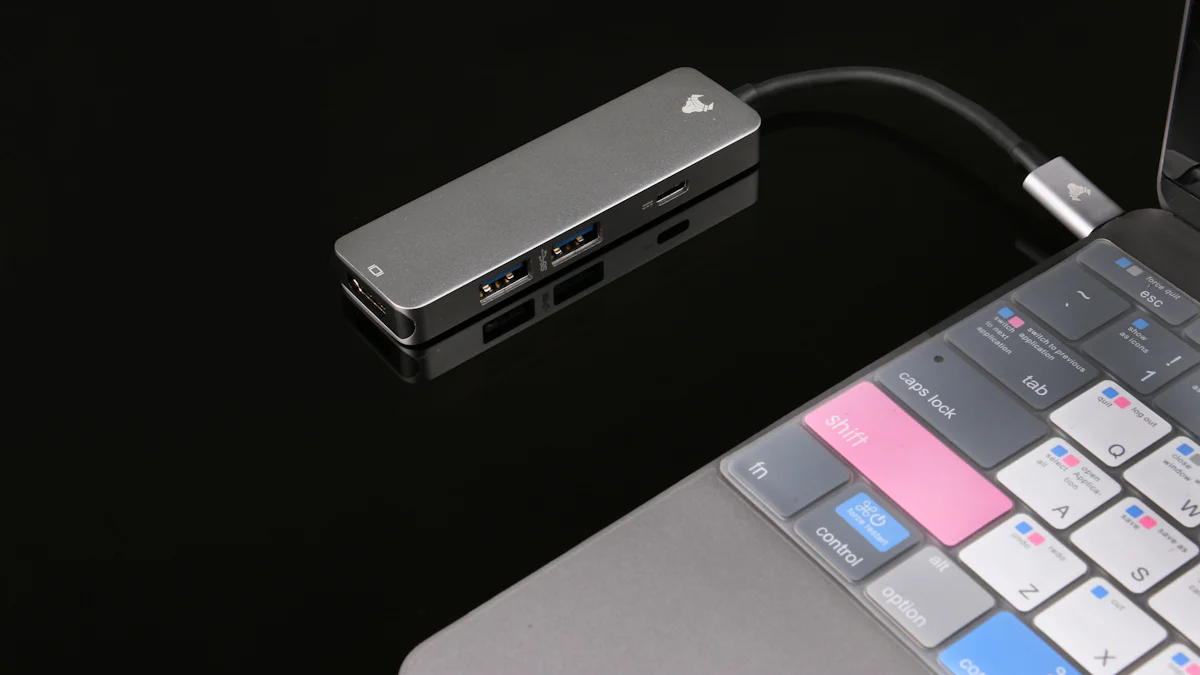
Your 5G portable router is the key to a high-speed 5G and reliable internet connection. Optimizing it can transform your browsing experience. Small changes, like adjusting settings or placement, can improve WiFi performance significantly. These tips help you achieve optimal performance, ensuring your portable routers deliver faster speeds and stable connectivity wherever you go.
Router Placement Tips to Boost the Performance

Choose a Central Location
Where you place your router plays a huge role in its performance. A central location ensures your WiFi signal reaches every corner of your space. If you put your router in a corner, the signal may weaken before it even gets to the other side of the room. Instead, aim for the middle of your home or office. This strategic router placement helps maximize coverage and keeps your connection strong.
Walls can also block signals, so keep your router away from them. Avoid placing it near windows, as signals can escape outside. By choosing the right spot, you’ll notice a significant boost in the performance of your 5G portable router.
Elevate the Router for Better Signal Distribution
Height matters when it comes to your router. Placing it on the floor can limit its ability to send signals effectively. Instead, elevate it on a shelf or table. This allows the antennas to transmit signals more evenly across your space. Adjusting the antennas at an angle can further improve performance.
Keep your router away from reflective surfaces like mirrors or water, as they can disrupt the signal. By raising your router, you’ll enjoy better signal strength and a more reliable connection.
Avoid Interference from Other Devices
Electronics and appliances can interfere with your router’s signal. Microwaves, cordless phones, and even baby monitors can disrupt your WiFi. To avoid this, keep your router away from these devices. The kitchen is another area to avoid, as appliances like refrigerators and ovens can weaken the signal.
Metal objects are also a problem. They can block or reflect signals, reducing your router’s performance. By minimizing interference, you’ll create a smoother and faster internet experience.
Optimizing Network Settings for Improved WiFi Performance
Utilice la banda de frecuencias adecuada (2,4 GHz frente a 5 GHz)
Choosing the right frequency band can make a big difference in how your 5G portable router performs. Most routers offer two options: 2.4 GHz and 5 GHz. Each has its strengths, so understanding them helps you improve WiFi performance.
| Banda de frecuencias | Velocidad máxima (Mbps) | Range Characteristics |
|---|---|---|
| 2,4 GHz | Up to 100 | Longer range, ideal for small data over distance |
| 5 GHz | Up to 1000 | Shorter range, better for high-speed applications |
If you’re streaming videos or gaming, the 5 GHz band is your best bet for high-speed 5G and low latency. But if you need coverage across a larger area, like a multi-room home, the 2.4 GHz band works better. Switching between these bands based on your needs ensures optimal performance.
Select the Best Channel for Your Network
WiFi channels can get crowded, especially in areas with many networks. Picking the best channel reduces interference and boosts performance. Tools like NetSpot or Wireless Diagnostics (for macOS) help you find the least crowded channel. You can also use third-party WiFi channel scanners with user-friendly interfaces to analyze and select the best option.
Once you’ve identified the right channel, update your router settings. This small tweak can significantly improve WiFi performance, especially in busy environments.
Enable Quality of Service (QoS) for Device Prioritization
Calidad de servicio (QoS) is a game-changer for managing your network. It prioritizes traffic, ensuring critical tasks like video calls or online gaming get the bandwidth they need. Here’s how QoS improves your network:
- En prioritizes and routes traffic efficiently, enhancing data processing.
- It ensures reliable delivery of data packets for mission-critical applications.
- It allocates limited resources effectively, reducing latency and improving performance.
For example, you can set QoS to prioritize video conferencing over large file downloads. This ensures smooth meetings without interruptions. Configuring QoS on your router helps you improve WiFi performance and maintain low latency for essential tasks.
Firmware Updates and Security Tips
Keep Firmware Up to Date
Keeping your router’s firmware up to date is one of the most important steps you can take to protect your network. Firmware updates often include patches for known vulnerabilities, ensuring your device stays secure. Here’s why staying updated matters:
- Updates fix security flaws that hackers could exploit.
- They improve your router’s performance and stability.
- They sometimes introduce new features to enhance your experience.
Outdated firmware can leave your router exposed to cyber threats. Cybercriminals can exploit these vulnerabilities to steal data or damage your system. To avoid this, check for updates regularly. Most routers have an option to enable automatic updates, which makes the process hassle-free. If your router doesn’t, set a reminder to check manually every few months.
Use Strong Passwords for Network Protection
A strong password is your first line of defense against unauthorized access. Weak or default passwords make it easy for hackers to break into your network. Follow these tips to create a secure password:
- Make it at least 16 characters long.
- Use a mix of uppercase and lowercase letters, numbers, and symbols.
- Avoid common words or phrases.
Utilizando un password manager can help you generate and store unique passwords for each of your devices. Don’t forget to change your password immediately if you suspect it’s been compromised.
Enable Encryption for Secure Connections
Encryption protects your data from prying eyes. Modern routers support several encryption protocols, but not all are equally secure. Here’s a quick breakdown:
- WPA2: Offers strong encryption with AES and is widely supported.
- WPA3: The latest standard, providing even better security with unique session keys and protection against eavesdropping.
Always choose WPA2 or WPA3 in your router settings. Avoid older protocols like WEP, as they’re outdated and vulnerable. By enabling encryption, you ensure your data stays safe from unauthorized access.
Managing Connected Devices to Boost the Performance
Limit the Number of Connected Devices
Your 5G portable router can only handle so much traffic at once. When too many devices connect, the network slows down, and you’ll notice a drop in performance. To avoid this, limit the number of devices connected to your router. Disconnect gadgets you’re not actively using, like smart TVs or tablets sitting idle. This frees up bandwidth for the devices that matter most.
If you live in a household with many users, consider setting up guest networks. These separate networks keep your main connection from getting overloaded. It’s a simple way to ensure everyone gets a smoother experience.
Prioritize Critical Devices for Bandwidth Allocation
Not all devices need the same level of priority. Your router’s Ajustes de calidad de servicio (QoS) let you decide which devices or applications get the most bandwidth. For example:
- Assign priority to video conferencing or gaming devices to maintain low latency.
- Use QoS to throttle bandwidth-hogging devices like file downloaders.
- Schedule heavy tasks, like backups, during off-peak hours.
You can access QoS settings through your router’s web interface or mobile app. By prioritizing critical devices, you’ll boost the performance of essential tasks without interruptions.
Use Device Segmentation for Better Management
Device segmentation helps you organize your network for better control. Split your devices into categories, like work, entertainment, and smart home gadgets. Many routers let you create separate networks for each group. This keeps high-bandwidth devices from interfering with others.
For example, you can assign your work laptop to a dedicated network for uninterrupted video calls. Meanwhile, your smart home devices can run on a separate channel. This segmentation improves overall performance and ensures low latency for critical tasks.
Advanced Features and Tools to Improve WiFi Performance

Consider a Mesh Network for Enhanced Coverage
If you’re struggling with dead zones or weak signals in certain areas of your home, a mesh network can be a game-changer. Unlike traditional routers, mesh systems use multiple nodes placed throughout your space to ensure consistent WiFi coverage. These nodes work together to eliminate dead zones and provide a seamless connection, even in larger homes or those with complex layouts.
Here’s why a mesh network might be perfect for you:
- En enhances coverage, ensuring every corner of your home gets a stable signal.
- You can roam freely between rooms without losing connection.
- It handles multiple devices at once without slowing down your network.
Whether you’re streaming in the living room or working in a far-off corner, a mesh network keeps your connection strong and reliable.
Use a Signal Booster to Strengthen the WiFi Signal
A signal booster can make a huge difference if you’re dealing with weak signals. These devices amplify your existing signal, making it stronger and more reliable. A typical signal booster includes an outside antenna to capture the signal, a booster unit to amplify it, and inside antennas to broadcast the improved signal throughout your space.
Signal boosters are especially effective in:
- Remote areas where cellular coverage is weak.
- Metal buildings that block signals.
- Large multi-tenant buildings where certain floors have poor connectivity.
By enhancing RF coverage, a signal booster ensures fewer dropped connections and faster data speeds. It’s a simple yet powerful tool to improve WiFi performance in challenging environments.
Leverage Router Management Apps for Monitoring and Optimization
Router management apps are your best friend when it comes to keeping your network in top shape. These apps let you monitor and optimize your router’s performance with ease. Look for apps with features like traffic monitoring, resource utilization, and automated anomaly detection.
Here’s a quick guide to what you should look for:
| Característica | Descripción |
|---|---|
| CPU and memory utilization | High usage can signal hardware bottlenecks. |
| Interface throughput | Analyze data rates to ensure the router is handling traffic as expected. |
| Errors and discards | Monitor for CRC errors, packet drops, and input/output discards. |
| Buffer utilization | High buffer misses could indicate traffic congestion. |
| Traffic monitoring | Analyze interface-level traffic patterns to detect congestion. |
| Resource utilization | Track CPU, memory, and hardware health indicators like temperature and voltage. |
| Latency and jitter | Low latency is essential for real-time applications like VoIP. |
| Power supply and temperature | Overheating can cause unexpected device failures. |
| Automate monitoring | Use tools with automated discovery and anomaly detection features. |
| Leverage AI | Employ machine learning to predict device failures or performance issues. |
| Historical data analysis | Use traffic trends for capacity planning and reducing operational costs. |
These apps make it easy to identify issues and optimize your network for better performance. With the right tools, you can ensure your 5G portable router delivers the best possible experience.
Regular Maintenance and Troubleshooting Tips
Perform Regular Speed Tests to Monitor Performance
Running speed tests regularly helps you keep an eye on your internet performance. It’s like a quick health check for your network. Speed tests measure your download and upload speeds, as well as latency. If you notice slower speeds than expected, it might be time to tweak your settings or troubleshoot potential issues.
You can use free tools like Speedtest by Ookla or Fast.com to get accurate results. Run these tests at different times of the day to spot patterns. For example, if your connection slows down during peak hours, your network might be experiencing congestion. By staying proactive, you can address problems early and maintain a smooth browsing experience.
Reboot the Router Periodically
Rebooting your router is one of the simplest yet most effective maintenance steps. Think of it as giving your router a fresh start. When you reboot, it clears out unused files and frees up memory, which can improve performance. It also helps your router switch to less crowded Wi-Fi channels, reducing interference and boosting speeds.
Here are some benefits of rebooting your router:
- It resolves minor glitches and restores optimal performance.
- It speeds up streaming and downloads by clearing memory.
- It helps your router adapt to less congested channels.
For best results, reboot your router every few weeks. If you’re using an older model, consider doing it weekly. This small habit can make a big difference in your internet experience.
Identify and Resolve Signal Interference
Signal interference can disrupt your Wi-Fi and slow down your connection. Identifying and fixing these issues is crucial for maintaining strong performance. Start by checking for devices that might interfere with your router, like microwaves, cordless phones, or baby monitors. These gadgets operate on similar frequencies and can weaken your signal.
To minimize interference, keep your router away from these devices. Metal objects and thick walls can also block signals, so place your router in an open area. If interference persists, consider switching to the 5 GHz band, which is less crowded than 2.4 GHz. These simple adjustments can help you enjoy a more reliable connection.
Optimizing your 5G portable router doesn’t have to be complicated. By following these tips—like placing your router centrally, using a signal booster, and tweaking network settings—you can boost the performance and enjoy a reliable internet connection. Don’t forget to keep your firmware updated and conduct regular speed tests to improve WiFi performance.
The performance of a 5G router isn’t just about hardware. Software tools, like router management apps, and features like intelligent failover, play a big role in maintaining optimal performance.
Long-term maintenance, like rebooting your router and enhancing RF coverage with the right antennas, ensures your portable routers stay efficient. With these strategies, you’ll enjoy faster speeds and a more stable connection for all your online needs.
PREGUNTAS FRECUENTES
What should I do if my 5G portable router is slow?
Start by identifying causes of slow 5G connectivity. Check for interference, outdated firmware, or too many connected devices. Adjust settings or reboot your router for improvement.
How can I ensure my router delivers high performance?
Use a high-performance router with updated firmware. Place it centrally, enable QoS, and limit connected devices. These steps ensure faster speeds and stable connectivity.
Do I need to update my router’s firmware regularly?
Yes, regular updates improve security and performance. They also fix bugs and add new features. Check for updates every few months or enable automatic updates.